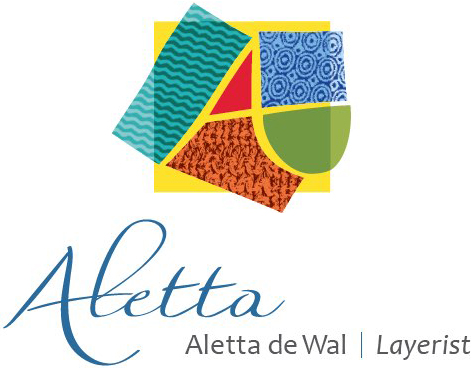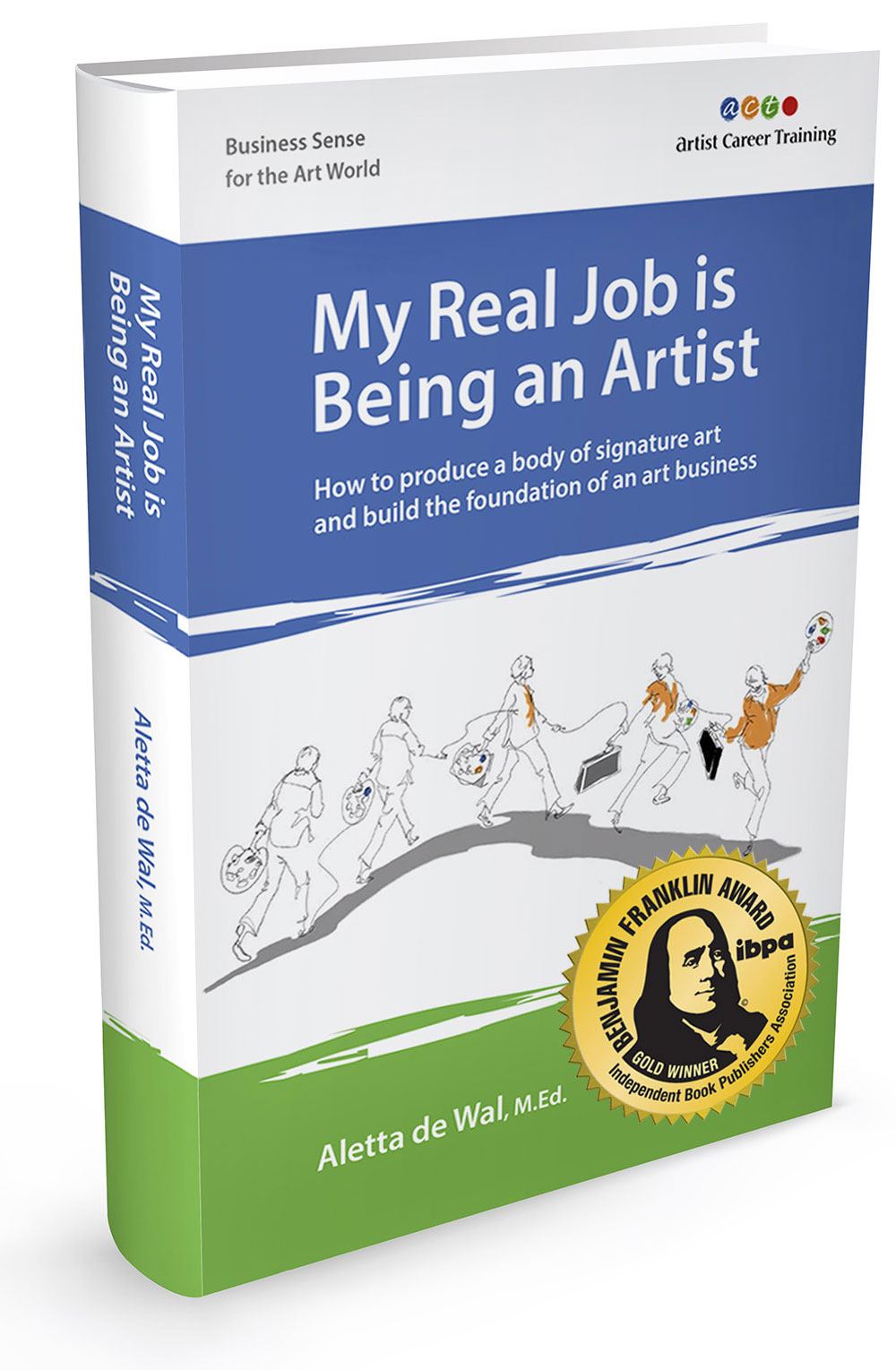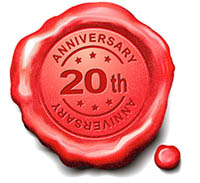Vickie Martin's Tactile Art Dances with Textured Layers
 Vickie Martin
Vickie Martin
Vickie Martin's art is a dance of shapes, rhythms and textures. A native of Atlanta and the daughter and granddaughter of piano tuners, rhythm is natural for her. Vickie incorporates anything she finds interesting into her collages - dress patterns, old maps, tissue paper, produce bags and stamps to name a few. She creates a tactile surface using not only paint, but everyday household items, such as salt, coffee, tea and alcohol. Not afraid of experimenting, Vickie has been known to set canvases outside during a storm. The layering of all of this creates a depth, and the more you look at her work, the more unexpected things appear.
A.C.T.: What prompted you to start your professional art career?
I began taking lessons as an adult. I was very lucky to find a teacher who encourages her students in all aspects of art. Chery Baird taught us from the beginning how to professionally present our work. Several of us bonded through class and started a critique group, Shadowline Artist Group. We began meeting on a monthly basis and found we wanted to exhibit as a group. That was the beginning for me.
A.C.T.: What makes an artist professional?
It is so important to have a professional presentation, from business cards, to a website, to framing. Having an artist statement for your work, and descriptions for every body of work strengthens your bond with the work and legitimizes you as a serious artist and not a hobbyist.
I live with a professional photographer, so I have the advantage of having great pictures of my work (he has photographed work of many artists, including Oldenburg).
A.C.T.: What is your artistic direction? What is your "life's work" as an artist - what legacy do you want to leave?  Vickie Martin in StudioOne thing all my paintings have in common is texture and many and many layers. I get in a zone and work on several pieces at a time. Several years ago I started with series of works. My first series of "vessels" morphed into planets, which became "Rhythm of the Universe". Both the vessel and the circle used in the planets are female symbols. The planet series is now morphing into a more "organic" state, using more found materials, i.e. coffee, tea, alcohol, salt, as well as inks, paints and collage. I continually try new materials and experiment with more organic shapes like vines and leaves.
Vickie Martin in StudioOne thing all my paintings have in common is texture and many and many layers. I get in a zone and work on several pieces at a time. Several years ago I started with series of works. My first series of "vessels" morphed into planets, which became "Rhythm of the Universe". Both the vessel and the circle used in the planets are female symbols. The planet series is now morphing into a more "organic" state, using more found materials, i.e. coffee, tea, alcohol, salt, as well as inks, paints and collage. I continually try new materials and experiment with more organic shapes like vines and leaves.  © Vickie MartinI also paint dresses, and found them to be very popular, so I am making a concentrated effort to brand myself at festivals with them - it's that female focus again! I keep returning to musical collages based on a piece of music or a composer.
© Vickie MartinI also paint dresses, and found them to be very popular, so I am making a concentrated effort to brand myself at festivals with them - it's that female focus again! I keep returning to musical collages based on a piece of music or a composer.
A.C.T.: What is your art business direction and what are your business goals?
My short-term goal is to really really get out there and network. I would like to get into more established festivals like the Dogwood Festival here in Atlanta. I'm working with an up and coming gallery right now - but would like to expand beyond Atlanta. I have gotten myself "out there" with social marketing too - creating a network of artists that is slowly expanding to collectors.
A.C.T.: How do you manage your time, money and energy?
I've had a full-time job for 21 years, which has afforded me plenty of vacation time. I work as a media buyer in advertising, buying time on television and radio. I take off a minimum of one Monday a month to devote myself totally to art. I generally paint at least one day a weekend, and several nights during the week for a few hours. I make the time to document the work I'm doing, because potential buyers always like a story about the work. When I'm just too exhausted to actually paint, and I haven't gotten to the point of watching Law and Order marathons - I will read about art and artists.
A.C.T.: What peak moments have you had as an artist? What makes it the best job in the world?
~ Several years ago a gallery in Atlanta put out a call for small works to sell during the holidays. I had a series of small collages built on tarot cards and since the gallery was in an alternative part of town, I thought it was a good fit and sent it to them. Lo and behold, their December artist cancelled and they offered me a solo show. It was a quick turnaround but exciting nonetheless! A Delicate Balance © Vickie Martin~ I was recently chosen from a group of artists to show my work at the Alliance Theater in Atlanta for the world premiere of their season opener "Come Fly with Me" featuring the music of Sinatra with the dance of Twyla Tharp. I didn't even submit to this, it was invitational.
A Delicate Balance © Vickie Martin~ I was recently chosen from a group of artists to show my work at the Alliance Theater in Atlanta for the world premiere of their season opener "Come Fly with Me" featuring the music of Sinatra with the dance of Twyla Tharp. I didn't even submit to this, it was invitational.
~ A choreographer contacted me with an idea about using a painter and a dancer interacting with each other. I brought a friend into the project and we painted 2 3'x5' panels live while the dancer danced between us and pushed through the canvas (which was made of spandex). Click here to see a video of the performance at the High Museum in Atlanta on college night. It was an exciting event in front of an audience of 2700+. While I didn't sell anything - we have been contacted by organizations as far away as Idaho to do it again.
~ Oh - being asked to participate in this interview as a Featured Artist is a peak moment too!
A.C.T.: How do you define and celebrate success?
Success comes in many forms. While it is exciting to have your work recognized and respected by people you respect, real success to me is when I have an "aha" moment in the studio and everything is clicking and moving along.
A.C.T.: What obstacles have you encountered in your art business and how have you handled them?
I started doing festivals about the time the economy sank - so while the sales haven't been that big, I have spent the time learning and perfecting my body of work.
Sometimes my obstacles are of my own doing. Having a full time job can be an obstacle when I really feel a creative urge and I'm unable to act on it because I have to go to my day job!
A.C.T.: What opportunities has a professional approach to your career brought you that you might otherwise not have had?
Having a good artist statement for my work helped legitimize my work and made people realize I am serious about my artwork - that it is more than just a hobby.
Behaving in a professional manner helps tremendously. The art world is competitive and no one wants to be labeled a difficult artist, because of attitude or they can't deliver on time, or they don't show up. Being dependable has gone along way.
A.C.T.: Who are your role models and mentors? What was the best advice they gave you?
You can't create art in a vacuum. It is important to continue learning and seeing what is being done out in the art world and what trends are popular.
I am a learner by nature so I continue taking classes and workshops. My teacher, Chery Baird, has drummed it into our head about presenting our work professionally, writing a good statement, and also making sure we know who our "ancestors in art" are - or where we are getting inspiration.
People that have given up the corporate life in the world of art are inspirations to me. Pat Fiorello comes to mind, as I've taken her marketing class and I know she helps artists in the A.C.T. community with Money Matters.
A.C.T.: What is your art marketing strategy? What promotional materials and actions do you use most often?
I have cards, a blog, and a website. Lately I have been networking a lot through Face Book. I have met many local artists and gallery owners this way. I am currently working on a database for inventory and a cohesive mailing list. Next is a newsletter to send out.
A.C.T.: What changes have you experienced in the art market and how have you navigated them? What lessons have you learned?
I have been displaying and selling my work for about 4 years. The biggest change during that time is the economy. I started doing smaller works, and making prints, and cards to sell at festivals. Surprisingly, I didn't sell as many of these as I thought I would. People still want the original piece. It is important to remember that purchasing fine art is not usually a spontaneous decision. You need to be patient, stay out there, and the people that are interested in your work will eventually come back and purchase it.
A.C.T.: What legal measures do you take to protect your work?
I haven't taken any legal action and this is something I need to learn more about - protecting myself. My elected officials have heard from me regarding the Orphan Works Law.
A.C.T.: What advice would you pass on to artists who want to succeed in any economy?
Get out there and network, network, and when you think you are done, network some more! Join local arts groups. I'm a member of the Atlanta Artist Center, the Women's Caucus of Art in Georgia (and nationally), the Atlanta Collage Society. This has enabled me to grow a good network of artists in the area. Taking art-marketing classes on line has introduced me to many international artists.
Ask questions and listen carefully. Continue to learn and don't create your work in a vacuum, know what is going on in the art world.
A.C.T.: How has your involvement in the A.C.T. program and community of professional artists furthered your career?
Just reading the information in the learning materials and these tips and newsletters makes me realize I still have some learning and growing to do. I'm excited about this next phase of my art-career!











